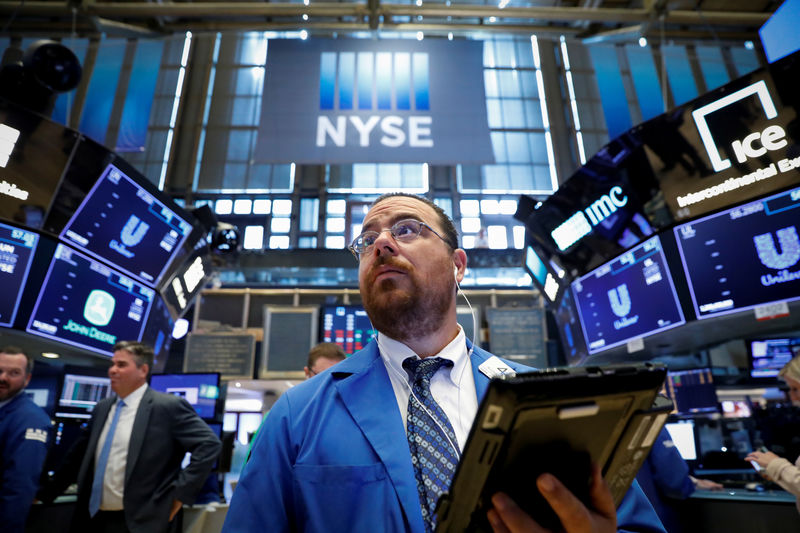 © Reuters.
© Reuters.
By Yasin Ebrahim
Investing.com – The S&P 500 rallied Friday, clawing its way out from correction territory as investors weighed signs that Russia could be open to returning to the diplomatic table even as the Kremlin's forces are closing in on Ukrainian capital Kyiv.
The S&P 500 rose 2.2% falling out of the 10% correction territory, with losses since its recent peak falling to 9%. The Dow Jones Industrial Average added 2.2%, or 834 points, the Nasdaq gained 1.6%.
As the Russian invasion of Ukraine entered its second day, reports that Russian President Vladimir Putin is open to sending a delegation to Belarusian capital Minsk to negotiate with Ukraine underpinned bullish bets on risk assets. There is still uncertainty, however, as to how serious Putin is about a diplomatic resolution as Russia forces are reported to be closing on Kyiv.
The U.S. and Europe continued to step up their sanctions on Russia. The U.S. and EU announced sanctions on Russia President Vladimir Putin and Foreign Minister Sergei Lavrov.
Still, the sanctions are viewed by some as not going far enough to force Putin to rethink his plan, which he said seeks to bring about the "denazification" and "demilitarization" of Ukraine.
U.S. President Joe Biden outlined fresh sanctions on Thursday aimed at further crippling Russia’s economy and curbing its access to key technology used to advance its military and industrial capabilities.
There had been some pressure on the president to roll out even tougher measures including cutting Russia off from the global payments system, and implementing measures to hamper Russia's oil and gas industry, which accounts for the bulk of the latter’s growth.
The weaker-than-expected sanctions have played a role in resuming bullish bets on stocks, though the jury is still out on whether the market has bottomed.
“It’s hard to declare with too much certainty that the market has hit a bottom, but I do think the weaker sanctions supported the market reversal yesterday,” Mark Heppenstall, chief investment officer at Penn Mutual Asset Management, said in interview on Friday.
Materials led the broader market move higher as investors bet on commodity prices continuing to trend higher because the Russia and Ukraine conflict could disrupt key global commodity supplies including energy, metals, and wheat from the region.
Nucor (NYSE:NUE), Freeport-McMoran Copper & Gold (NYSE:FCX), Mosaic (NYSE:MOS) were among the biggest gainers in the sector.
Financials were boosted by rising bank stocks, pushed higher by Treasury yields as signs of ongoing red-hot inflation keeps the Federal Reserve on course to begin hiking rates in March.
Signature Bank (NASDAQ:SBNY), Truist Financial (NYSE:TFC), Zions Bancorporation (NASDAQ:ZION) were up more than 6%.
“What's happening in Ukraine does give the Fed a little more cover to be patient on monetary policy tightening, but a 25 basis point hike in March and a 25 basis point hike in June, are the base case scenarios,” Heppenstall said. “I see the Fed funds rate at 1% to 1.25% by year end… I would say four to five rate hikes sounds reasonable to me."
Sentiment on the broader market was also underpinned by mostly upbeat quarterly results.
Block (NYSE:SQ) reported fourth-quarter results that beat on the top and bottom lines, and delivered better-than-expected guidance, sending its shares more 26% higher.
Beyond Meat (NASDAQ:BYND) fell more than 9% after reporting a wider-than-expected loss as revenue came in below Wall Street estimates as management "ramped up investment spending in an environment of slowing growth at retail, leading to significant losses,” Oppenheimer said in a note.
“We expect a meaningful reset of Street numbers and view a path to profitability [for Beyond Meat] even more challenging going forward."
Etsy (NASDAQ:ETSY), meanwhile, reporting better-than-expected fourth-quarter earnings and revenue, sending its shares more than 16% higher.

